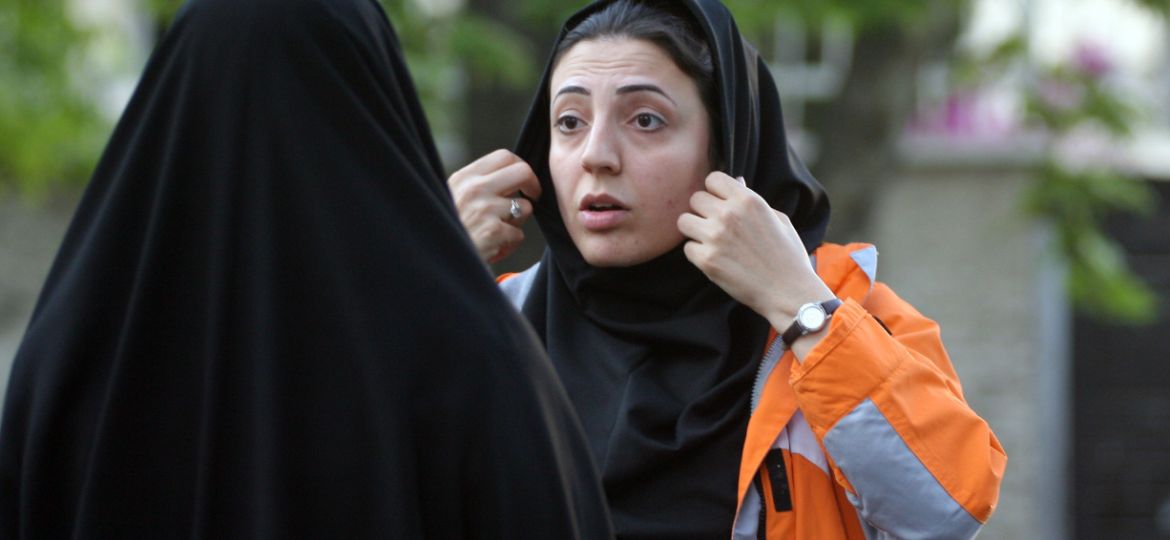
 Those who resist the current Iranian regime such as Mrs. Maryam Rajavi, President of the Iranian Resistance, believe that the solution for the future of Iran is to fight for “complete gender equality in political, social and economic arenas” and “equal participation of women in political leadership.” However, recent developments in Iran such as new laws discouraging single women from working and reducing women’s working hours, enforcement of penalties for women who were cycling, and the development of “women’s only” sections on the Tehran-Mashhad rail line suggest that the country is in fact moving in the opposite direction regarding women’s rights.
Those who resist the current Iranian regime such as Mrs. Maryam Rajavi, President of the Iranian Resistance, believe that the solution for the future of Iran is to fight for “complete gender equality in political, social and economic arenas” and “equal participation of women in political leadership.” However, recent developments in Iran such as new laws discouraging single women from working and reducing women’s working hours, enforcement of penalties for women who were cycling, and the development of “women’s only” sections on the Tehran-Mashhad rail line suggest that the country is in fact moving in the opposite direction regarding women’s rights.
It is a popular complaint that the Iranian regime attempts to manipulate its citizens as well as the international community by electing supposedly progressive presidents such as President Rouhani, while Supreme Leader Khomeini maintains complete control of the country behind the scenes. “It’s a myth when people say things have improved in Iran under the so-called ‘moderate’ President Rouhani. In fact, it’s the total opposite.” Says Elaheh Arj, vice chair of the Women’s Committee NCRI. One of the areas where this false image of progressive ideals is the most has the greatest effect is in the domain of women’s issues.
Iran is known for its restrictions on women’s clothing, employment options, and activities, justified by Iran’s harsh interpretation of Islamic law. However, in recent years, many Iranian activists argue that focus on the Iran nuclear deal and the supposed movement of Iran to a more “moderate” government has caused the international community to overlook the Iranian regime’s human rights violations against women. “Sanctions against Iran are being lifted following the nuclear deal, and everybody now is cozying up to Iran because the focus in on the ISIS.” suggests Lady Val Corbett, a human rights activist who spoke at an online conference regarding Iranian Human Rights this February.
Iran’s imposition of dress code on the women in Iran is one example of how laws have not slackened since Rouhani came to power. The Gasht-e-Ershad or “morality police” have recently begun strictly enforcing mal veiling infractions by setting up morality stations, impounding the cars of women caught mal-veiling, and even performing mass arrests of mal-veiled women during raids of popular public hang-outs.
Corbett suggests that the international community ignoring these human rights infractions while nuclear agreements are being reached is “tantamount to encouraging the mullahs’ regime to continue these atrocities in Iran”, and in this way, many activists fear that the mirage of progress in Iran is in fact doing more harm than good for the Iranian people.
Even the atrocious acts of acid attacks on women by the regime, a phenomenon that peaked in 2014, is not being properly condemned by the supposedly progressive government. Corbett states, “Since Rouhani came to power, the Iranian parliament has passed a legislation to protect those attacking women with acid under the pretext of combatting ‘mal-veiling’ She suggests that “Rouhani will not change the women’s rights situation in Iran” and “it would be naïve to think that.”
Clearly the issue of how moderate Iran’s regime is truly becoming is one of contention, and many Iranians are rebelling against this form of rule through different forms of opposition. Recent developments such as the creation of a telephone application that warns other citizens of where the morality police are set up, the open rebellion of women by taking off their headscarves in the privacy of their cars and a recent movement of men wearing hijabs to support women in Iran, demonstrate that the Iranian people are willing to go to great lengths to demand change.
When it comes to issues of women, it appears that the Iranian people believe that Iran has a long way to go before becoming the moderate state it claims to be.
Maryam Hejazi,
OIAC

